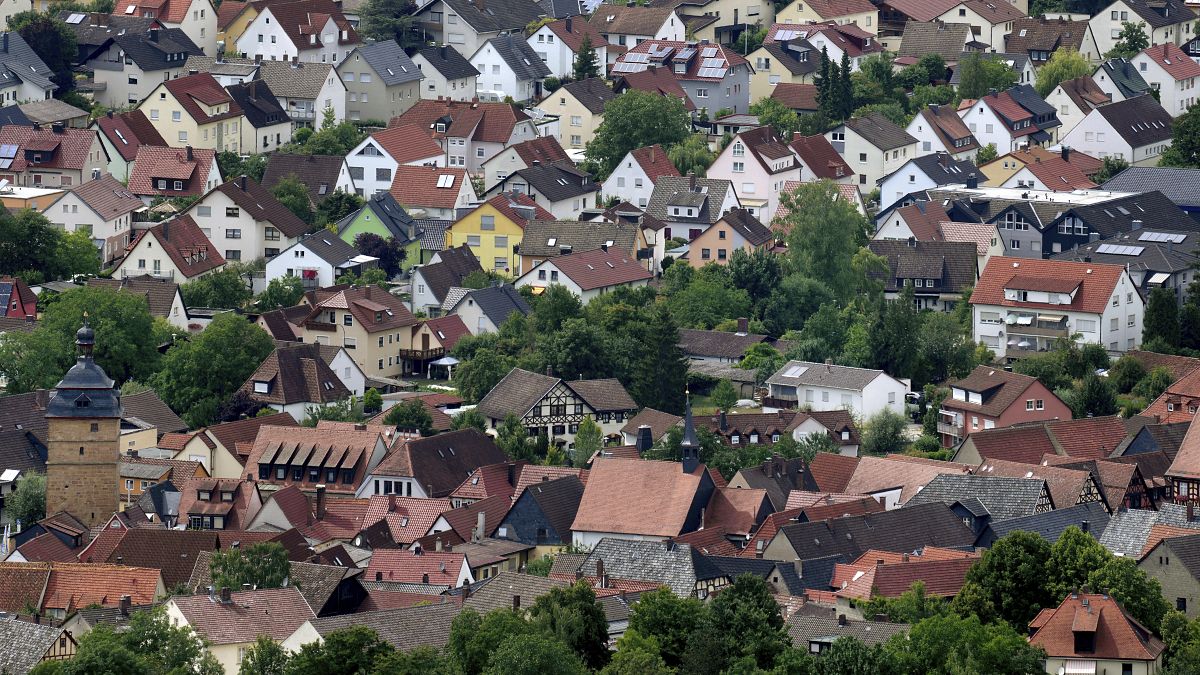Bussiness
Housing in Europe: How do homeownership and tenancy rates compare?

Switzerland and Germany have high tenancy rates with over half of their populations renting homes. Conversely, the Balkan countries demonstrate higher homeownership rates, though many homes are overcrowded.
The housing crisis is a growing concern across Europe, marked by shortages and escalating rents. Approximately 70% of EU residents own their homes, while the remaining 30% rent. About 17% of the EU population lives in overcrowded conditions.
In Europe, the housing landscape is varied, with a significant divide between homeowners and renters. In eight out of 36 European countries, more than 90% of the population lived in their own homes in 2022 according to Eurostat.
Over half of the population rents in Germany and Switzerland
In Germany, the proportion of renters exceeded 50% in 2022, making it unique among EU countries. Switzerland, considering the broader European Free Trade Association (EFTA, the UK, and candidate countries, had the highest proportion of renters at 57.7%.
Homeownership is higher in Balkan countries
North Macedonia, Albania, and Romania boast homeownership rates above 95%. Except for Turkey, the homeownership rate was higher in Balkan countries – a trend that extends to Hungary, Serbia, Croatia, and Montenegro.
In contrast, countries like Austria, Turkey, Denmark, France, Sweden, and the UK fall below the EU average homeownership rate of 69.1%.
Among the EU’s ‘Big Four’, Spain and Italy had the highest rates, with three out of every four residents living in their own homes.
Public policies and social rental housing
European countries have implemented various policy measures to ensure affordable housing. These include housing allowances, social rental housing, and rent regulations.
On average, social housing makes up 8% of the total housing stock in the EU according to the OECD’s Affordable Housing report. This refers to residential rental accommodation provided at sub-market prices and allocated according to specific rules rather than market mechanisms.
The Netherlands, Austria, and Denmark have the largest shares of social housing, constituting more than 20% of their total housing stock.
The UK, France, Ireland, Iceland, and Finland have moderate social housing sectors, ranging from 10% to 19%.
The sector is relatively small in Switzerland (8%) and Germany (2.7%) where over half of the population are tenants.
Do you have enough rooms in your home?
Quality of housing is critical. The OECD highlights that overcrowded and limited-space homes negatively affect health, especially for children. The average number of rooms per person and overcrowding rates are key indicators of housing quality.
In 2022, the average number of rooms per person in the EU was 1.6, ranging from 2.3 rooms in Malta to 1.1 rooms in Poland, Romania and Slovakia.
The average room per person was lower in the candidate countries in the Balkans, correlating with higher rates of overcrowding. Despite high ownership rates in Balkan countries, overcrowding remains an issue in these regions.
At least half of the population in Montenegro, Albania and Serbia were living in overcrowded homes. Overcrowding rate was 16.8% in the EU.
Among the EU countries, the highest overcrowding rates were observed in Latvia (41.7%), Romania (40.5%), and Bulgaria (36.2%), whereas the lowest were in Cyprus (2.2%), Malta (2.8%), and the Netherlands (2.9%).
Call for affordable housing
In January 2024, a collective of 100 public, cooperative, and social housing providers, alongside policymakers and researchers, convened in the European Parliament. Led by Housing Europe, the group issued a manifesto outlining three steps to ensure affordable and decent housing for all in the EU:
- Embrace a new housing paradigm
- Back the movement for a fair energy transition
- Address the root causes to end housing exclusion
In particular, the manifesto called for support for public, cooperative, social, and community-led housing as the backbone of national housing systems.









